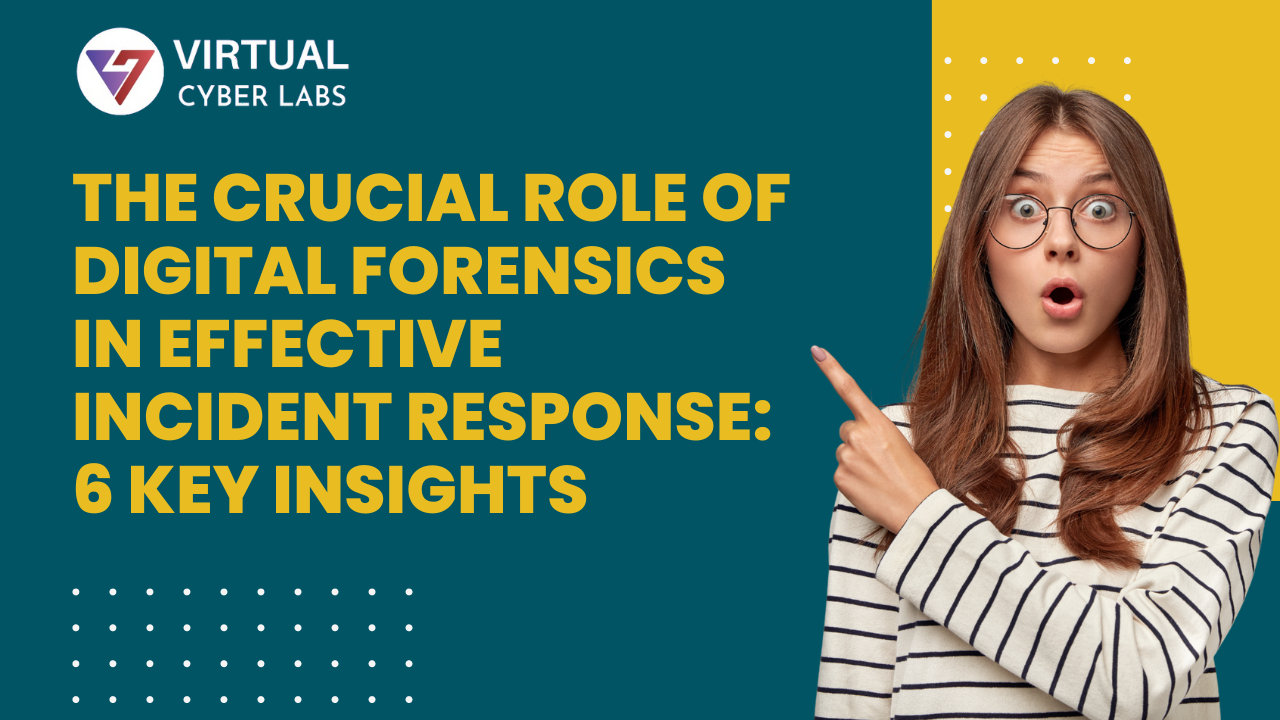The Crucial Role of Digital Forensics in Effective Incident Response: 6 Key Insights
In today’s digital age, organisations face an increasing number of cyber threats and security incidents. As these incidents become more sophisticated, the role of digital forensics in incident response has become crucial. Digital forensics involves the collection, analysis, and preservation of digital evidence to understand and address security breaches. This article explores the integral role of digital forensics in incident response and how it contributes to effective cybersecurity management.
UNDERSTANDING DIGITAL FORENSICS AND INCIDENT RESPONSE
Digital forensics is a specialised field focused on the investigation of digital devices and data. It aims to uncover evidence from computers, mobile devices, network systems, and other digital sources to understand the nature of an incident. Incident response, on the other hand, is the process of managing and mitigating the impact of a security incident, such as a cyberattack or data breach.
Effective incident response relies heavily on digital forensics to provide a comprehensive understanding of the incident. Digital forensics helps in identifying the cause of the breach, the scope of the damage, and the method used by the attackers. By analysing digital evidence, organisations can respond more effectively and prevent future incidents.
DIGITAL FORENSICS IN INCIDENT RESPONSE
- Incident Identification and Containment
The first step in incident response is identifying that a security incident has occurred. Digital forensics plays a critical role in this phase by analysing system logs, network traffic, and other digital artefacts to confirm the presence of a breach. Forensic tools can detect unusual patterns or unauthorised access, helping to quickly identify and assess the scope of the incident.
Once an incident is confirmed, the next step is containment. Digital forensics helps in isolating affected systems to prevent further damage. By examining digital evidence, forensic experts can determine which systems have been compromised and ensure that containment measures are properly implemented. This prevents the spread of the attack and minimises its impact on the organisation.
- Evidence Collection and Preservation
Collecting and preserving digital evidence is a fundamental aspect of digital forensics. In an incident response scenario, it is crucial to gather evidence in a way that maintains its integrity and admissibility. Digital forensics experts use specialised tools and techniques to create forensic images of affected systems, ensuring that the original data remains unchanged.
Proper evidence collection and preservation are essential for understanding the incident and providing evidence for legal proceedings, if necessary. Ensuring the chain of custody is meticulously documented helps maintain the credibility of the evidence and supports the organisation’s legal standing.
- Analysis and Investigation
Once evidence is collected, digital forensics experts analyse it to uncover critical information about the incident. This involves examining files, logs, and other digital artefacts to determine the nature of the attack, how it was executed, what vulnerabilities were exploited and other digital incident investigation. Advanced forensic techniques, such as malware analysis and data recovery, are used to gain insights into the attacker’s methods and objectives.
The analysis phase also helps in identifying the impact of the incident, including data loss, system compromise, and potential data breaches. By understanding the full scope of the incident, organisations can make informed decisions about remediation and recovery.
- Root Cause Analysis
Identifying the root cause of an incident is crucial for preventing future occurrences. Digital forensics helps in tracing the attacker’s actions back to their origin, uncovering the vulnerabilities that were exploited, and understanding the methods used. This information is vital for improving the organisation’s security posture and implementing measures to address identified weaknesses.
Root cause analysis involves examining how the attacker gained access, what tools and techniques were used, and whether there were any lapses in security protocols. By addressing these issues, organisations can strengthen their defences and reduce the risk of similar incidents in the future.
- Reporting and Documentation
Accurate reporting and documentation are essential components of incident response. Digital forensics provides detailed reports that outline the findings of the investigation, including the nature of the attack, the evidence collected, and the analysis performed. These reports are crucial for internal reviews, legal proceedings, and regulatory compliance.
Documentation also helps in creating an incident response plan and improving the organisation’s overall security strategy. By learning from each incident, organisations can refine their response procedures and enhance their ability to handle future threats.
- Post-Incident Review and Improvement
After an incident has been resolved, a post-incident review is conducted to evaluate the effectiveness of the response and identify areas for improvement. Digital forensics contributes to this review by providing a comprehensive analysis of the incident, including what went well and what could be improved.
The insights gained from digital forensics help organisations update their incident response plans, enhance their security measures, and better prepare for future incidents. Continuous improvement is essential for maintaining robust cybersecurity defences in an ever-evolving threat landscape.
CONCLUSION
Digital forensics plays a pivotal role in incident response by providing the tools and expertise needed to effectively manage and mitigate security incidents. From identifying and containing incidents to collecting and preserving evidence, analysing attacks, and conducting post-incident reviews, digital forensics ensures that organisations can respond swiftly and effectively respond to cyber attacks. By integrating digital forensics into their incident response strategies, organisations can enhance their ability to protect their digital assets, recover from breaches, and strengthen their overall security posture.
Read more blogs on cybersecurity :
The Impact of Cryptocurrency on Cybercrime – Virtual Cyber Labs
UNDERSTANDING THE ROLE OF ETHICAL AI IN CYBERSECURITY – Virtual Cyber Labs
Securing Artificial Reality (AR) : Cybersecurity Insights 2023







